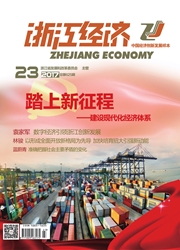

 中文摘要:
中文摘要:
Food safety issues constitute an international topic discussed by many scholars. Although there is an extensive body of literature on comparisons of food safety control practices across different governance structures,these studies have been conducted mainly in terms of qualitative and descriptive analysis. In addition,little attention has been given to family farms. This study addresses the food safety control practices adopted by firms with different governance structures in China. Food safety control is expressed by the following aspects,i.e.,pollution-free,green,organic,and/or geographical indication products certification,establishment of production records,and pesticide residue testing. Three types of governance structures that engage in agricultural production are distinguished:farmer cooperatives,agricultural companies,and family farms. The food safety control practices of various governance structures are investigated based on a database that comprises 600 vegetable and fruit enterprises in Zhejiang,China. The results show that(1) pesticide residue testing is adopted by the most firms,followed by products certification,and production records are adopted by the fewest firms,and(2) agricultural companies adopt more food safety control practices than family farms,while farmer cooperatives adopt the fewest food safety control practices. Governance structure features of a cooperative in terms of ownership,decision-making,and income distribution are the main reasons for the low level of food safety control in the cooperative.
 英文摘要:
英文摘要:
Food safety issues constitute an international topic discussed by many scholars. Although there is an extensive body of literature on comparisons of food safety control practices across different governance structures, these studies have been conducted mainly in terms of qualitative and descriptive analysis. In addition, little attention has been given to family farms. This study addresses the food safety control practices adopted by firms with different governance structures in China. Food safety control is expressed by the following aspects, i.e., pollution-free, green, organic, and/or geographical indication prod- ucts certification, establishment of production records, and pesticide residue testing. Three types of governance structures that engage in agricultural production are distinguished: farmer cooperatives, agricultural companies, and family farms. The food safety control practices of various governance structures are investigated based on a database that comprises 600 vegetable and fruit enterprises in Zhejiang, China. The results show that (1) pesticide residue testing is adopted by the most firms, followed by products certification, and production records are adopted by the fewest firms, and (2) agricul- tural companies adopt more food safety control practices than family farms, while farmer cooperatives adopt the fewest food safety control practices. Governance structure features of a cooperative in terms of ownership, decision-making, and income distribution are the main reasons for the low level of food safety control in the cooperative.
 同期刊论文项目
同期刊论文项目
 同项目期刊论文
同项目期刊论文
 期刊信息
期刊信息
